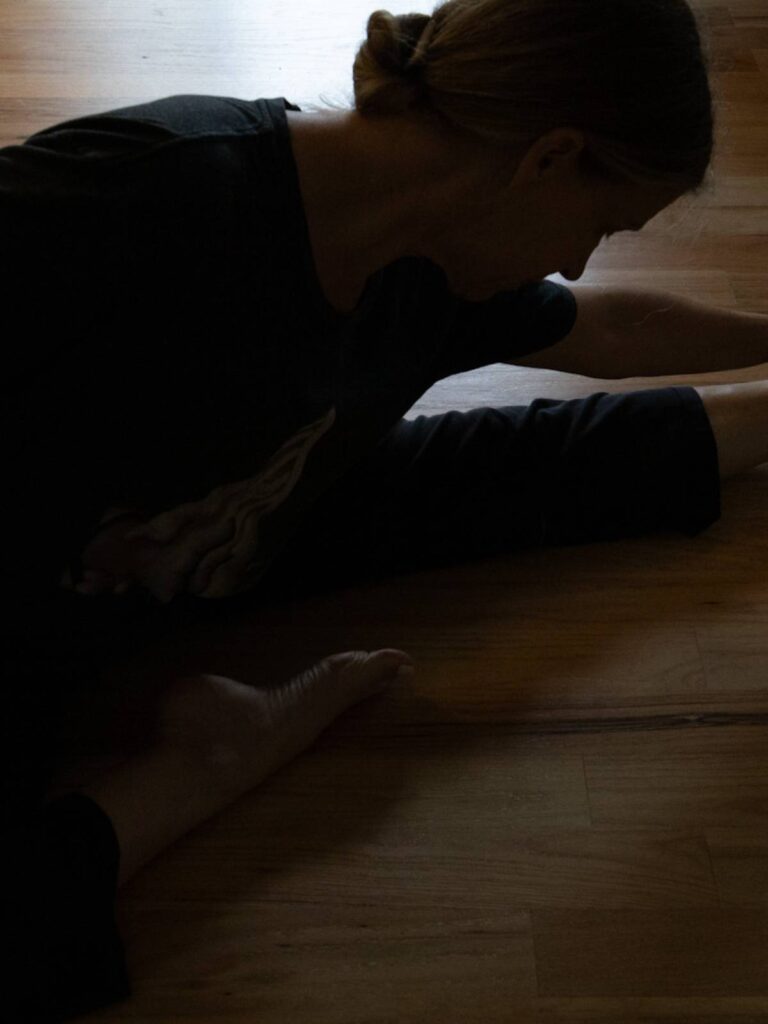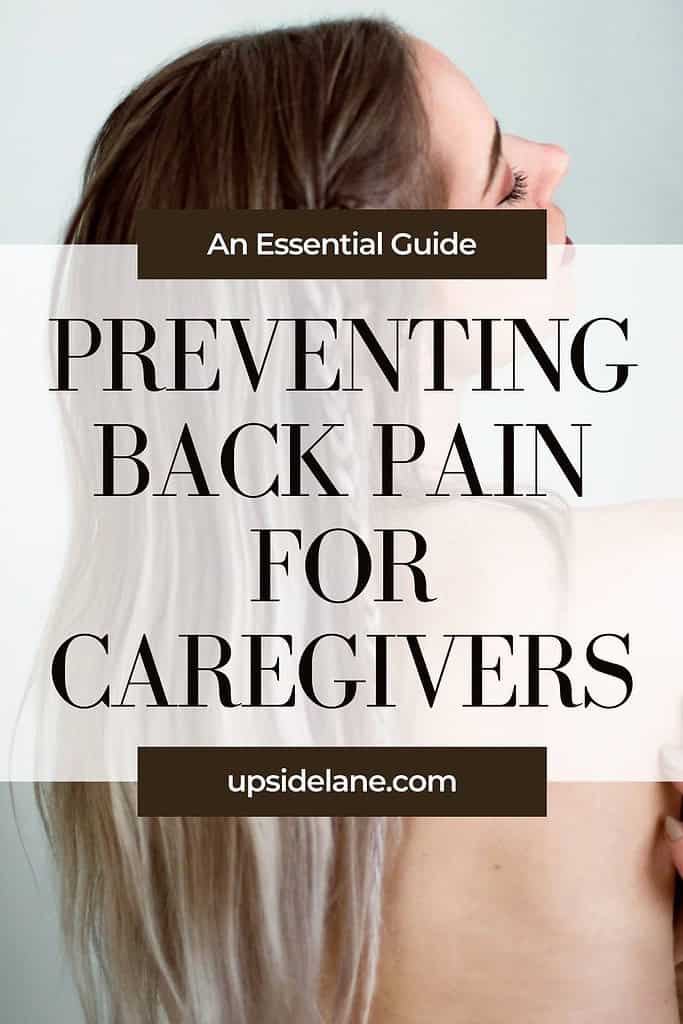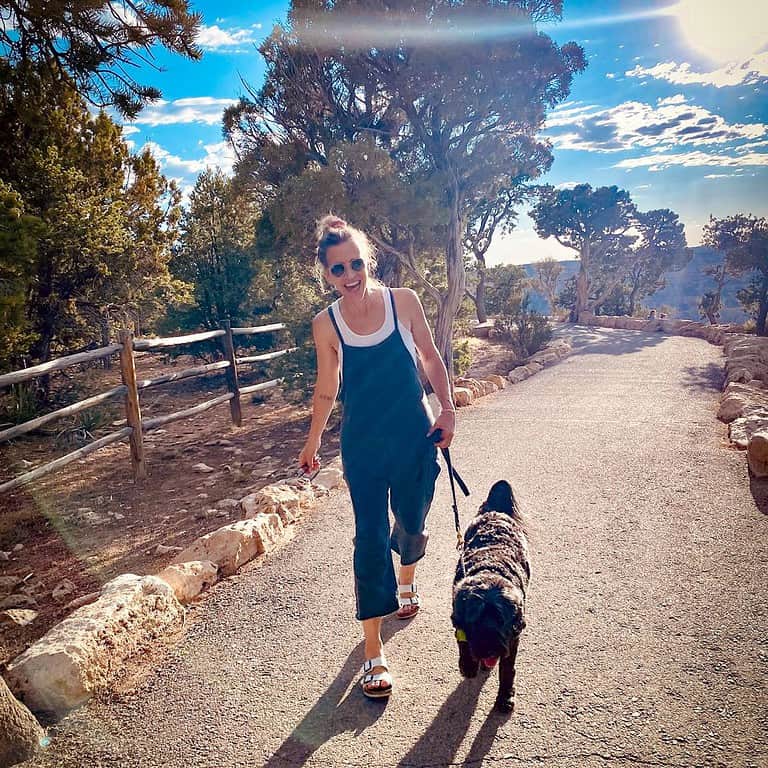A Caregiver’s Guide to Preventing Back Injury
Protect your back with this caregiver’s guide to preventing back injury. Learn essential techniques to prevent back injury and maintain your health as a caregiver.

A caregiver’s guide to preventing back injury, with prevention techniques, strength exercises, and recovery tips to prevent back strains and protect your back during caregiving responsibilities.
In the United States, back injuries are the second leading occupational injury, and among healthcare workers, nurses have the highest rate of back pain – 40-50%.
This is for paid healthcare professionals who have training and access to assistive devices such as Hoyer lifts and other transferring equipment.
More often than not, the unpaid, or informal caregiver, has very little education and training on how to lift and transfer, and the equipment needed to help them in the home is lacking.
Approximately 42 million Americans are providing unpaid care to an adult over 50 years old. That is almost 17% of the U.S. adult population.
Education, training, and assistive devices would be extremely beneficial in helping reduce injury – specifically the prevention of back injuries among caregivers.
As an oncology nurse working in the hospital, I was very aware of the need to prevent back strain or an injury, due to improper lifting and transferring techniques. Annual education exams on this topic were mandatory.
From my nursing experience, I know that once a back is strained or injured, it becomes very difficult to continue working effectively.
In this article, based on my professional experience as a nurse and health coach, I share essential tips and prevention strategies to help caregivers reduce the risk of back injuries.
Common Causes of Caregiver Back Injury
There are many reasons for a caregiver to experience back pain. Here are a few common reasons home caregivers may experience sore back muscles, lower back pain, and injury.
Improper lifting techniques. Proper lifting techniques are imperative when lifting heavy objects and helping a care recipient maneuver, such as transferring from a chair to a bed.
Family caregivers must learn how to implement safe lifting techniques, such as bent knees and feet shoulder-width apart when moving and transferring their loved ones.
This reduces the risk of injury and is an important factor in preventing back injury.
Repetitive movements. Doing the same movements over and over may not seem like it is putting strain on the body, however over time, the repetitive movement can cause strain, physical pain, and even musculoskeletal injuries if not careful,
Even if you are using the proper technique, just the fact that the movement is repetitive and the same over and over can cause strain to that area of the body.
It is important to be aware of all your movements throughout the day and be conscious of good body mechanics to reduce your risk of injuries.
Emergency movements. One of the biggest risks of injury for care providers is having to make a sudden emergency movement to help their care recipient, such as the prevention of a fall.
Often we can be in an awkward position when having to move suddenly, with little time to position ourselves correctly. This greatly increases our risk of injury.
Poor posture. Having poor posture and not paying attention to the alignment of our body as we go about our daily caregiving tasks can put us at an increased risk for chronic pain conditions such as chronic back and neck pain, headaches, and more.
It is important to use proper posture for safe patient handling and to reduce potential risks for chronic injuries.
High-Risk Caregiving Activities
Being a primary family caregiver, although rewarding, also puts us at an increased risk for injury due to the high physical demands we experience throughout the day.
Some caregiving activities are riskier than others. Here are high-risk caregiver activities to pay close attention to – specifically for back and shoulder injuries.
Patient transfers. Transferring a loved one at home is far riskier than in a hospital or a healthcare facility because most homes lack essential patient equipment such as a Hoyer patient lift or gait belt.
Healthcare professionals in hospitals and facilities are fully trained and have the best equipment available to them. They are also able to ask for assistance whenever they need the necessary support.
Bathing assistance. If we do not have proper equipment in the home, providing care for a loved one while bathing can put us in an awkward position.
It is important to make sure you are in a proper standing or sitting position while assisting your care recipient.
Bed positioning. Reaching over and straining to help your loved one into that perfect sleep position causes great strain on the back and abdominal muscles.
Adjust the bed height to a comfortable level that enables your loved one to transfer easily while also allowing you to assist without risking back injury.
Emergencies. Whenever there is an emergency, it is difficult to think clearly. This is often the time when injuries happen.
Learning techniques to stay calm during stressful situations, such a meditation or deep breathing, is a great way to help prevent injuries.

Back Injury Prevention Strategies for Caregivers
Maintaining proper body mechanics is crucial for caregivers to prevent back injuries, and understanding body alignment is the first step.
Here are a few things to think about when helping your loved one.
- Solid Base. Keep your feet shoulder-width apart, with one foot slightly in front of the other, for a solid support base.
- Core muscles. Use your core muscles to support your back, with legs and knees slightly bent to keep your center of gravity low.
- Close to the body. Keep whatever you are lifting or moving close to your body. Avoid reaching or stretching too far, which can strain your back.
- Leg muscles. When lifting or transferring, to avoid injury, bend at the hips and knees and use your leg muscles versus your back.
- Take breaks. Be mindful of taking breaks as needed. Avoid overexerting yourself, and if you feel you need help, stop.
- Stretch. Rest and stretch often. Pause to stretch out your muscles and then try again. Do not rush when lifting and transferring.
5 Daily Practices to Prevent Back Injury
Here are five best practices to prevent back injury as a busy caregiver.
- Morning preparation routine. Stretch your back in the morning before starting your day, and especially before any lifting or transferring.
- Regular posture checks. As you move about your day, be mindful of your posture. Check to see that you are standing tall, with your shoulders down and back, and your core is engaged.
- Mini-breaks. It is important to take mini-breaks in between tasks, to catch your breath, and do a few stretches.
- Stretch. Stretching is highly overlooked, whenever you can, take a minute to stretch. Be it your legs and hamstrings, shoulders, neck, or back. Stretch as often as you can throughout the day.
- End-of-day prevention routine. Ending your day with a healthy caregiver routine is just as important as starting your day. Consider a warm bath, some gentle stretches, etc.
Back Strengthening Exercise Guide
Keeping your core muscles strong, and flexible, is probably one of the single most important things you can do to prevent a back injury.
Here are a few core strengthening exercises to keep your abdominal and back muscles strong and to prevent a back strain or injury.
Core Strengthening Exercises
Plank. The basic plank, or a variation of it, targets the abdominal, back, and shoulder muscles to build overall core strength.
Planks can be done with either the hands and feet or they can be modified to using the elbows and knees depending on your core strength and injury assessment.
Bird dog exercises. The bird dog exercises challenge balance and stability by having the opposite arm and leg extended. It is also a great exercise for engaging the core.
Bridge movements. Bridge movements mobilize the spine while also strengthening the glutes and hamstrings.
Start slow and do not push your body too far with these movements. Engage in modified versions of a full bridge position to get started.
Safe abdominal exercise. Safe abdominal exercises, like a modified crunch, can be performed to tone the core without straining the back.
When performing abdominal exercises, do so slowly and mindfully. It is important to be in control of your own body and not throw it around haphazardly.
Back Injury Recovery and Pain Management
Back injuries are no fun for anyone but they can be significantly challenging for caregivers, causing debilitating pain and disrupting the ability to provide care for the ones they love.
It is important to manage recovery from a back injury promptly and thoroughly – not only to reduce pain symptoms but also to prevent re-injury, and to support long-term spine health.
Here are some relief techniques for a strained back.
Ice/heat therapy. Generally speaking, ice therapy constricts and reduces inflammation while heat therapy increases blood flow.
If you have a new back injury, it is best to ice the injury for 2-3 days to reduce swelling and inflammation and to create a numbing effect.
Then heat can be applied to improve blood circulation and to bring nutrients back to that injured area.
Rest. Rest is the best option after a back injury. Placing a pillow under the legs to create a slight bend in the knees can be very helpful to reduce back pain.
If you feel more comfortable lying on your side, gently place a pillow between both bent knees to keep your legs and hips in alignment while resting. This also alleviates back pain.
Gentle movement strategies. It can be very easy to re-injure your back when you are managing a back strain. Slow, steady, and gentle movements will be your best bet.
Exercises. Gentle exercise sometimes helps to relieve back pain. If this is the case, incorporate slow, controlled stretches to the back, neck, and legs when appropriate.
Prevention Is Key
Preventing back injury while caregiving requires a thoughtful balance between self-awareness, proper body mechanics and technique, as well as physical preparation.
As both a nurse and a caregiver for Doug who is managing Parkinson’s disease, I understand the importance of protecting your back so that you can continue to provide good care for your loved ones.
Prevention is always better than recovery, and making a few small changes in your daily routine can lead to a significant difference in maintaining your spine health.

Frequently Asked Questions
Some of the early warning signs of back strain are muscle stiffness, tightening or spasms, difficulty straightening after bending, and sharp pain with certain movements.
Seek immediate medical attention if you experience numbness or tingling, severe pain that does not improve with rest, pain after a fall or sudden movement, or loss of bladder or bowel control.
Exercises that are helpful to strengthen the back are planks, cat-cow, and bird-dog stretches, as well as controlled abdominal exercises.
Planks. Put yourself in a push-up position, on either your hands and feet or your elbows and knees. Engage your core and hold for 1-2 minutes, then rest. Do this for 5-10 repetitions.
Cat-Cow Stretch. Start on your hands and knees, and alternate between rounding and arching your back. Do this for 5-10 gentle repetitions.
Bird-Dog Exercise. Start on your hands and knees, then extend the opposite arm and leg. Hold for 5-10 seconds on each side. Repeat this for 5-10 repetitions.
NOTE: As always, before starting any exercise regimen, talk to your healthcare provider first.
It can be challenging to continue with caregiving responsibilities while recovering from a back strain. The most important thing is to communicate your limitations and needs to your loved ones, and to also listen to your own body.
Prioritize only the essential tasks, and pay close attention to proper body mechanics. Use assistive devices if possible, and ask for help when needed. Do not try to be a hero!
If you think you strained your back while caregiving, the first thing to do is assess and stay still. Do not move until you have assessed your situation.
Are you thinking clearly, what is your pain level, where. is your pain?
If you feel safe to proceed, move slowly and using proper body mechanics, move to a standing position. If you cannot do so alone, ask for help.
NOTE: If you feel you injured your back, and you lack support to move or get up on your feet, call for help. There should be no hesitation.
Maintaining good posture throughout our long and busy caregiving days is not always easy. We may have the best intentions but as we get tired, so does our posture, and we slump and droop with the best of them!
Some tips to maintain good posture throughout the day are,
Mindfulness. Check-in on your body posture every hour or so, on your standing, maneuvering, etc. Be actively mindful of your posture throughout the day.
Frequent breaks. Taking frequent breaks helps our bodies rest and relax, allowing us to return to proper posture when we are ready to get moving again.
Stretching is one of the best things we can do to keep our bodies injury-free and maintain good posture. Stretch as often as you can throughout the day, even if it’s a few stretches here and there in between chores and responsibilities.
More Physical Well-Being Articles to Enjoy
- How To Design A Night Routine For Better Sleep
- Heart Disease Risk and Caregiving: 10 Self Care Tips
- Sleep Deprivation Symptoms and Health Effects
- 5 Simple Dumbbell Exercises: Full Body Beginner Workout
Additional Support for Caregivers
Let’s Connect
I hope you enjoyed this article on preventing back injury as a busy caregiver.
By following this caregiver’s guide to preventing back injury – from proper body mechanics to core strengthening exercises and early warning signs – you can protect your back while providing essential care.
QUESTION. Do you experience back strain? If so, what are some of the ways you protect yourself against further injury?
Let me know in the comment section below, I’d love to hear from you!







What a great comprehensive list of ideas on this important topic. I had no idea how prevalent back pain was amongst caregivers. Thank you for this info!
Oh yes…and you are most welcome!